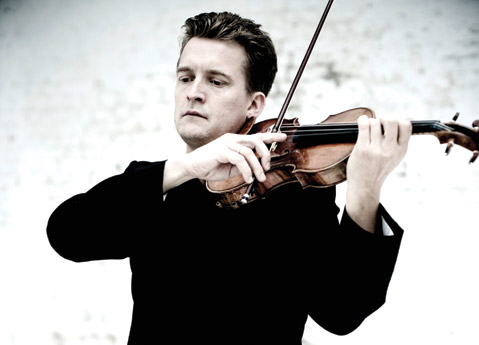Christian Tetzlaff Interview
Violinist to Mix Modern and Classic at Lobero on February 11

Classical music fans sometimes make the mistake of automatically equating “old” with “good.” Sure, there’s much to be said for a creation that has proved itself over the centuries. But modern pieces can be equally dazzling — especially if they’re modeled on the old masters.
World-renowned violinist Christian Tetzlaff will prove that point in two ways Monday night. For his solo recital at the Lobero Theatre, which is part of CAMA’s Masterseries, he will play a 10-year-old instrument he considers equal to or better than those crafted by Guarneri and Stradivarius.
His program will feature music by J.S. Bach and three 20th-century composers, one of whom is still alive. Eugène Ysaÿe, Béla Bartók, and György Kurtág are all in the master’s debt, but they’ve utilized his templates to create uniquely expressive and deeply personal works.
Tetzlaff, who was born in Hamburg, Germany, in 1966, is no stranger to the Lobero: He gave an all-Bach solo recital in 2008 and returned to that stage with his string quartet in 2011. This will be our first chance to hear him play his current instrument, which was created by German violin maker Stefan-Peter Greiner.
“I was faithful to one of Mr. Greiner’s instruments for 12 years,” he said. “Last year, I switched to another one of his, which is a fulfillment of every dream of mine. It’s just perfect.”
As a world-class musician, Tetzlaff could certainly play a fine instrument from the golden era of the 17th and 18th centuries. But he chooses not to. “I couldn’t care less when an instrument was built,” he insisted. “I’ve played many Strads that I thought were less interesting than my own fiddle, in sound and character.”
“I just played a very beautiful Guarneri del Gesù and my fiddle [in a blind test] for a violin maker. He said both were wonderful instruments, but he was sure which one was the Guarneri because there was ‘an Italian sheen around the sound.’ Of course, that was my Greiner!”
To be fair, like most of Greiner’s instruments, Tetzlaff’s violin has “a certain shape that Guarneri used at one point of his life,” he noted. “But it’s not a copy.” In a sense, the same can be said for the modern works he will perform at the Lobero.
“Bach is the focal point of the whole program,” he said. “Ysaÿe, especially in his first sonata (a four-movement work from 1924), makes very strong references to him. It is a beautiful sonata, also not often heard.”
Kurtág’s Signs, Games and Messages, a series of miniatures written in 1989, contains a movement expressly called “Homage to J.S. Bach.” “Bach is the focal point of Kurtág’s compositions all the time,” Tetzlaff insisted.
The evening closes with a seldom-heard masterpiece: the 1944 Sonata for Unaccompanied Violin by Bartók. Tetzlaff noted that its first movement contains echoes of the famous Chaconne from Bach’s Second Partita.
The rest of the piece is modeled after Bach’s C major sonata [which is also on Monday night’s program]: “There’s a fugue, a melodious third movement, and a very fast last movement,” he noted. “The C major sonata is a strong but jubilant work; the Bartók tends to be darker.
“Often, I play movements from it as an encore [after a concerto], and nobody recognizes it — not even the violin players of the orchestra!” he said. “It’s really weird that one of our major pieces isn’t recognized. To play it properly is an amazing challenge. It’s physically very demanding.”
So why do composers keep turning to Bach for inspiration? In Tetzlaff’s view, it’s because his music touches something deep inside his listeners.
“I find that when I’m playing for schoolchildren, they are profoundly affected by Bach, even though the musical language isn’t always simple,” he said. “His way of developing a movement, his way of writing melodies, seems to be atavistic — something that’s already in us.”
4•1•1
Christian Tetzlaff performs at the Lobero Theatre (33 E. Canon Perdido St.) at 8 p.m. on Monday, February 11. Tickets are $33-$43. For more info, call (805) 963-0761 or visit camasb.org.



